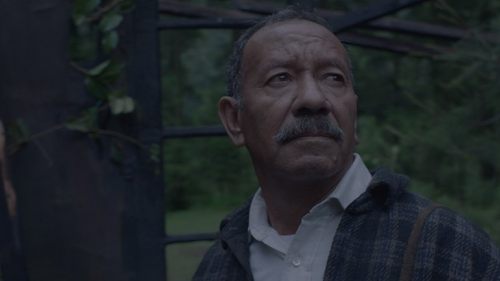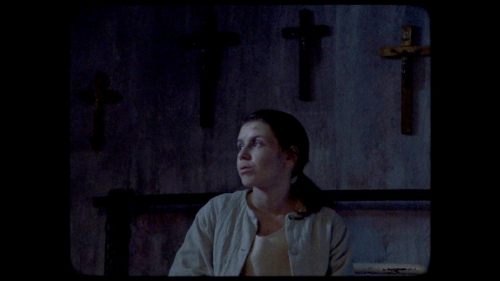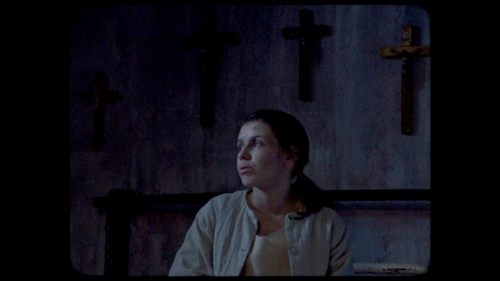Brooklyn Horror Film Festival Review: 1974 Makes Found Footage Look (And Sound) Good
Summarizing Mexican writer-director Victor Dryere’s 1974 is simple enough, as it offers a tried-and-true horror movie premise at its core: in 1974 a young couple embark on their new life together, recording the goings-on in their newlywed home with their Super 8 camera, when strange things begin to happen. Altair’s behavior changes from bubbly to bizarre as she begins to speak to unseen “angels” and constructs a black brick door through which to interact with them, leaving her husband Manuel confused and scared by his bride’s dark transformation. It’s apparent from the beginning that things don’t pan out well for them; the film opens with their disappearance, and the only clue left behind is a collection of 8mm film reels.
The movie wastes no time in establishing the chemistry between its primary players; within the first ten minutes Altair (Diana Bovio) and Manuel (Rolando Breme) have exhibited multiple nuances of love and intimacy, a bond of paramount importance within the forthcoming narrative. Altair slowly shifts into a cold shell of the woman Manuel married, and soon her changing demeanor becomes too much to explain away. As with most paranormal films, the story is foregrounded on a woman’s bodily possession and a man’s spiritual battles. Altair’s external trials (her corporeal torment) and Manuel’s internal struggles with rationalism and accepting the supernatural occupy much of the narrative, but their fully formed characters bring authenticity to the horror of their collective ordeal. Diana Bovio’s increasingly intense performance is complemented by Rolando Breme’s subtle acting, bringing a balance to the leading duo that outdoes genre staples like Paranormal Activity.
1974’s experience is a slow and steady one on all fronts but aural. The aggressive sound design attacks the senses throughout the film to amplify the scare factor in every jarring scene. In one standout scene, hundreds of birds descend upon the couple’s home in a thunderous roar only matched by the apocalyptic swell of noise in the final moments. At other times, the lack of sound is just as calculated; several of the most frightening moments occur in total silence as we glimpse something that the protagonists can’t yet see. Between the auditory assault and the emotional empathy garnered from Bovio and Breme’s performances, the scares are earned, and deep.
When working with a storytelling tool as played out as found footage is, the greatest obstacle is that of challenging the viewer while hitting all the right notes of said subgenre. Dryere sees this and doesn’t fall into the trap of gimmickry. Interesting choices in blocking and framing go a long way in acting as a visual counterbalance to the grainy 8mm aesthetic. The film displays a confident level of genre-cognizance in both reference and influence (there are nods to everything from Hitchcock to The Exorcist) and makes solid use of found footage tropes to rhythmically heighten tension without ever going stale in its 82 minute runtime. The measured pace increases to a galloping third act and an ending with all of the tautness of the final two minutes of The Blair Witch Project, while delivering a far more satisfying payload.
1974 has a beating heart that doesn’t rely on the 8mm format to adequately circulate its lifeblood. In the same way that Pontypool shut me up about the death of the zombie subgenre, so does 1974 with found footage. Dryere’s debut film utilizes genre so well that he effectively counts on and undermines audience expectations, making for a fresh, unsettling experience for horror fans old and new.



